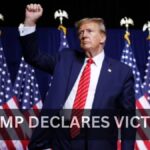
Protests and Debates Amidst the Israel-Hamas Conflict.
US Campus Protests: The visible tension surrounding the Israel-Hamas conflict has reverberated across university campuses throughout the United States, sparking a wave of student-led protests and igniting passionate debates on campus speech, freedom of expression, and the Israeli-Palestinian conflict. As demonstrators took to the streets, their chants echoing amidst a backdrop of heightened emotions and heightened security measures, the protests morphed into a battleground of ideologies, with students and faculty alike grappling with the complexities of political activism and social justice advocacy.
Search
Recent Posts:
- OpenAI Brings ChatGPT to be used in WhatsApp: Here’s How It Works and What You Can Do To Use It.

- Realme 14x 5G: A Budget Smartphone With Premium Features.

- Exploring Apple Genmoji: A New Era of Custom Emoji Creation.

- 2024 United States Presidential Election: Donald Trump Declares Victory in 2024 Presidential Election

- Chancellor Olaf Scholz’s Visit to India: Advancing Indo-German Cooperation on Defense, Trade, and Regional Stability.

At the forefront of this expanding movement are students who have boldly voiced their solidarity with the Palestinian cause, calling for an end to the violence in Gaza and advocating for Palestinian rights. From coast to coast, impassioned protesters have rallied together, converging on university campuses with banners, placards, and chants demanding justice and accountability. Yet, as their numbers swelled and their voices grew louder, so too did the backlash from those who opposed their message, leading to clashes with law enforcement and accusations of antisemitism.
Columbia University’s Campus Crisis.
One such flashpoint emerged at Columbia University, where a pro-Palestinian student encampment became the focal point of a contentious standoff between protesters and university administrators. As negotiations faltered and tensions escalated, the university senate took the extraordinary step of passing a resolution to establish a task force tasked with examining the administration’s handling of the situation. This move, hailed by some as a step towards accountability, underscored the growing rift between students and university leadership, with many questioning the institution’s commitment to fostering a safe and inclusive campus environment.
Despite repeated calls for the removal of the encampment, the university’s decision to involve law enforcement drew sharp criticism from students and faculty members alike. Many argued that the use of police force only served to escalate tensions and suppress dissent, undermining the very principles of free speech and academic freedom that universities purport to uphold. In response, student activists vowed to stand their ground, defiantly asserting their right to protest and condemning what they perceived as a heavy-handed response from university officials.
Antisemitism Allegations Amidst Protests.
As the protests unfolded, allegations of antisemitism emerged, further complicating an already fraught situation. Jewish students reported feeling marginalized and intimidated, with some expressing concerns that the protests had veered into hate speech and bigotry. The use of anti-Semitic slurs only deepened the divisions on campus, highlighting the need for dialogue, understanding, and mutual respect among diverse communities.
Amidst the turmoil, university administrators found themselves grappling with a delicate balancing act, torn between the competing demands of student activists, faculty members, and external pressures. While some sought to de-escalate tensions and foster dialogue, others opted for a more heavy-handed approach, resorting to law enforcement to quell the protests. The decision to involve police forces sparked outrage and condemnation from civil rights groups, who criticized what they saw as a violation on the constitutional rights of protesters.
University Responses Amid US Campus Protests.
In response to mounting pressure, some universities took steps to address the concerns of protesters, offering concessions and engaging in dialogue in an effort to de-escalate tensions. At California State Polytechnic University, Humboldt, administrators issued a deadline for protesters barricaded inside a building to vacate, offering amnesty to those who complied. While this move was welcomed by some as a sign of goodwill, others saw it as a capitulation to external pressures, further fueling resentment and mistrust among student activists.
As the protests continued to unfold, the debate over campus speech and the Israeli-Palestinian conflict showed no signs of abating. With graduation ceremonies looming on the horizon, university officials faced mounting pressure to resolve the crisis and restore a sense of normalcy to campus life. Yet, as the dust settled and the echoes of protest faded, the scars left behind served as a stark reminder of the challenges facing universities in navigating the complexities of political activism and social justice advocacy in an increasingly polarized world.
To read more topics, please visit: https://insightfulbharat.com






